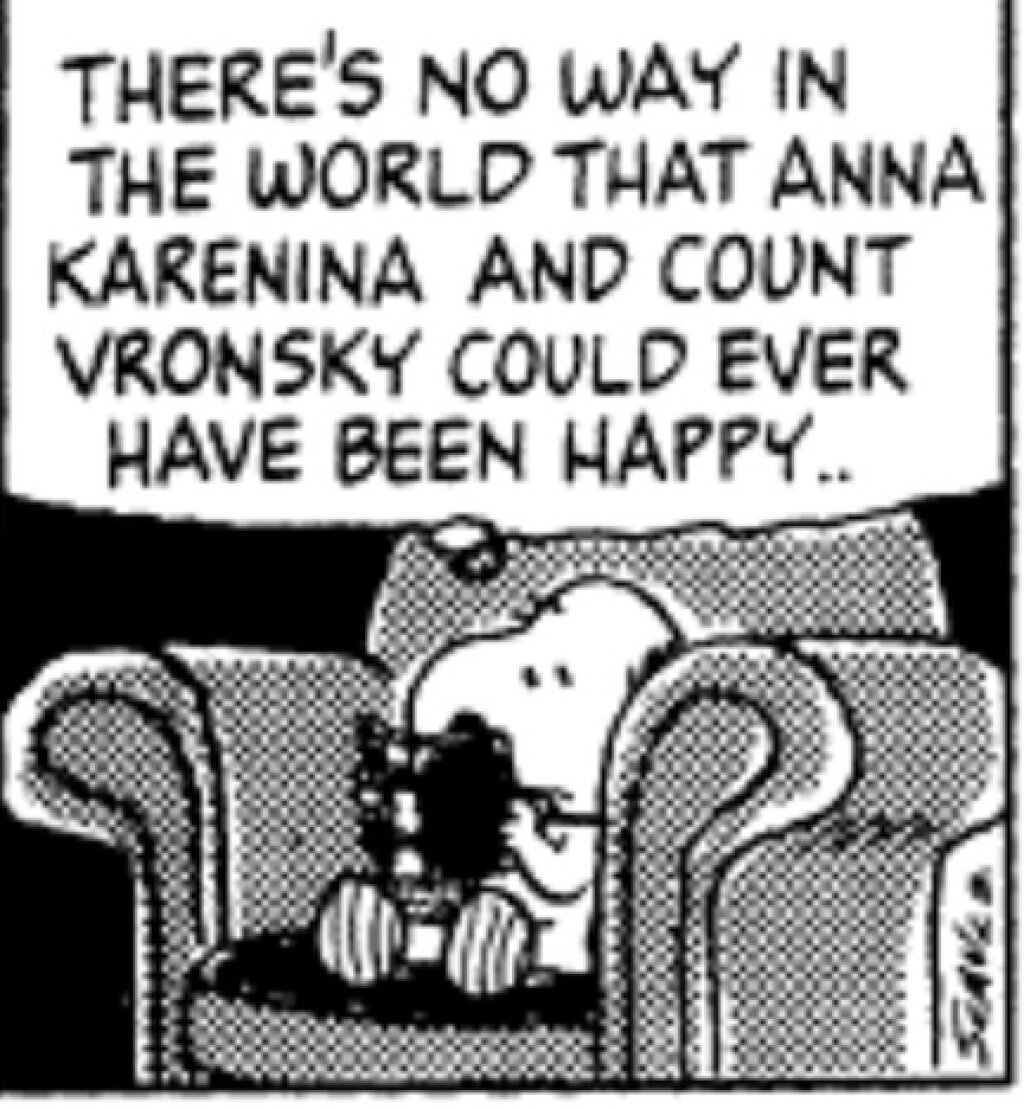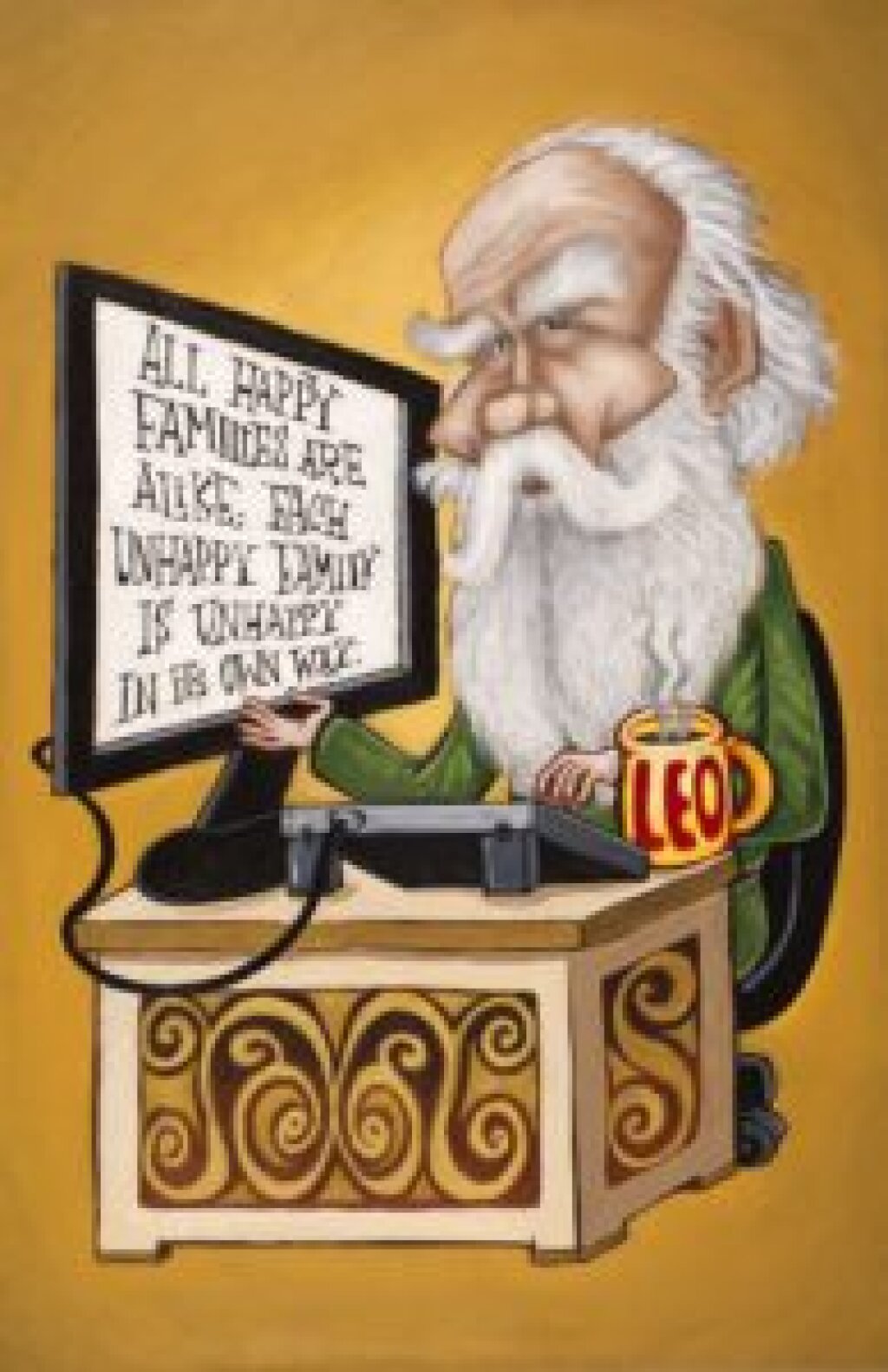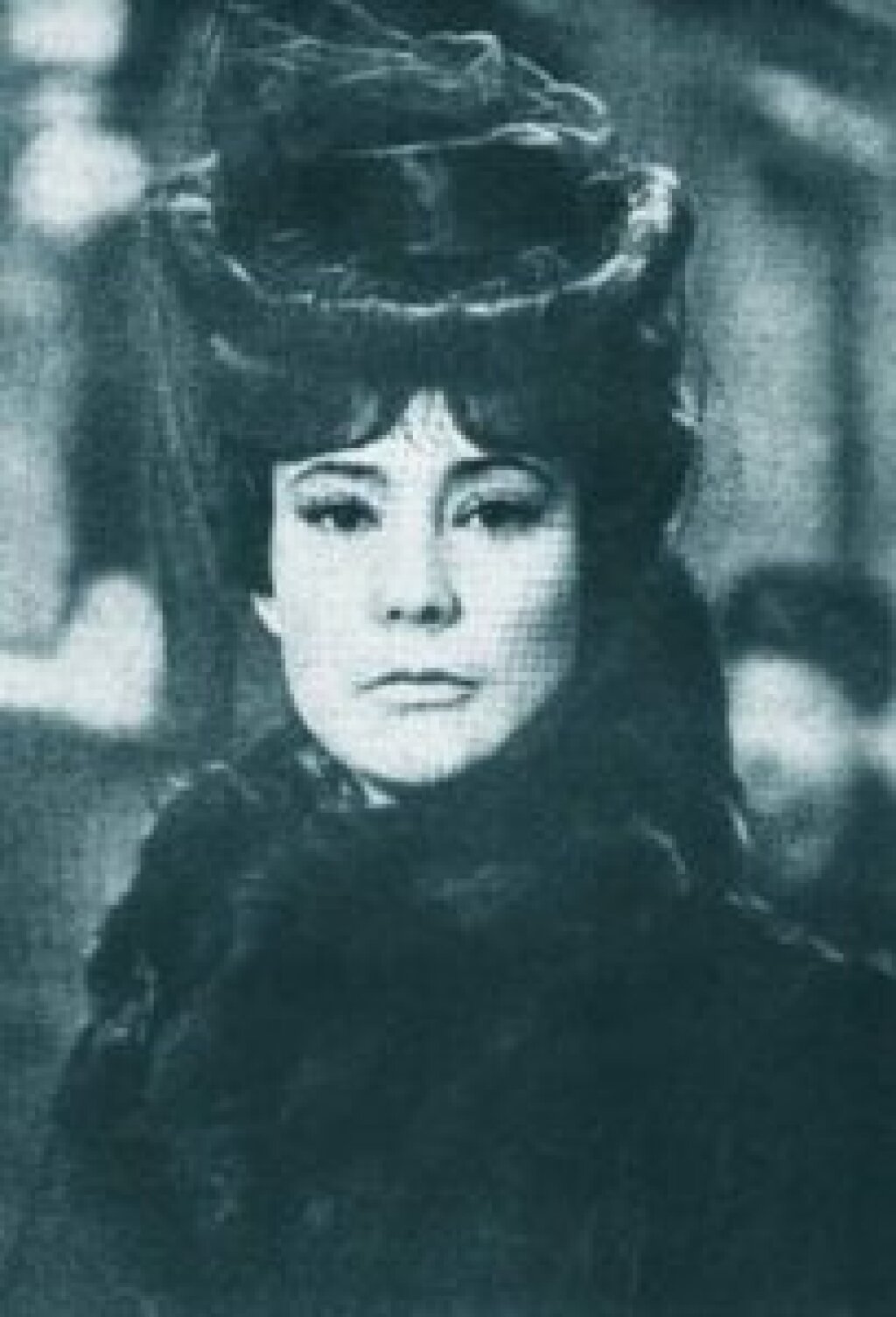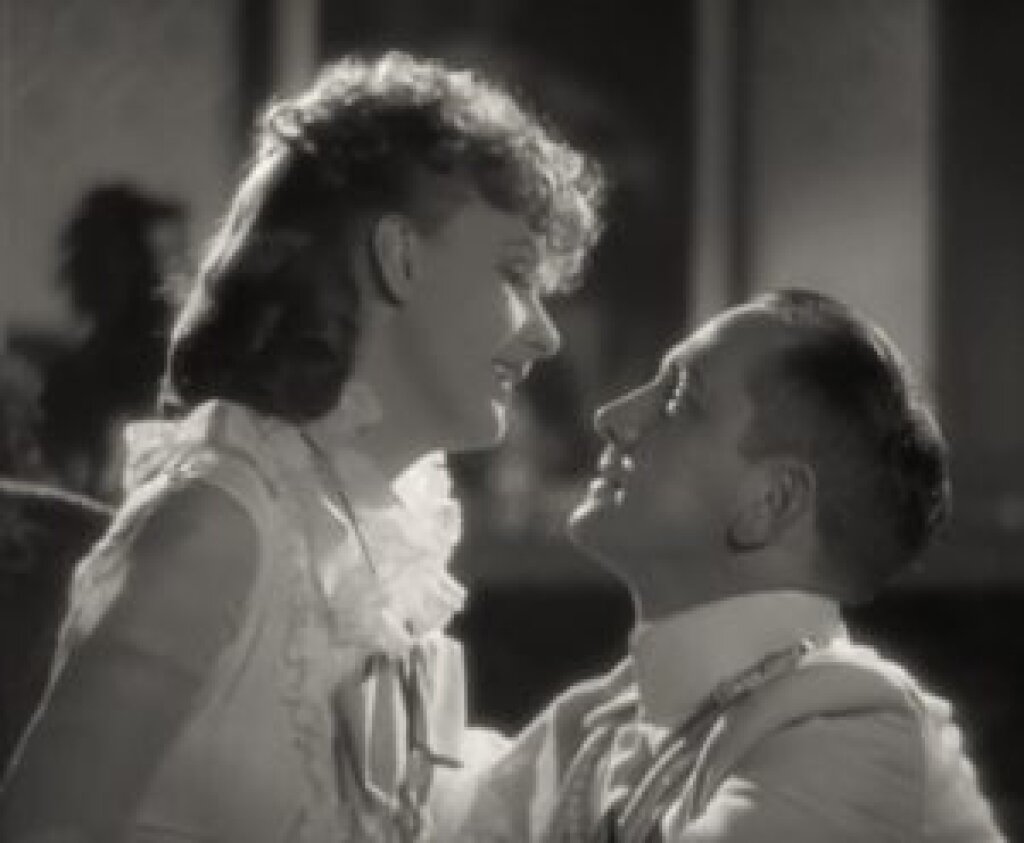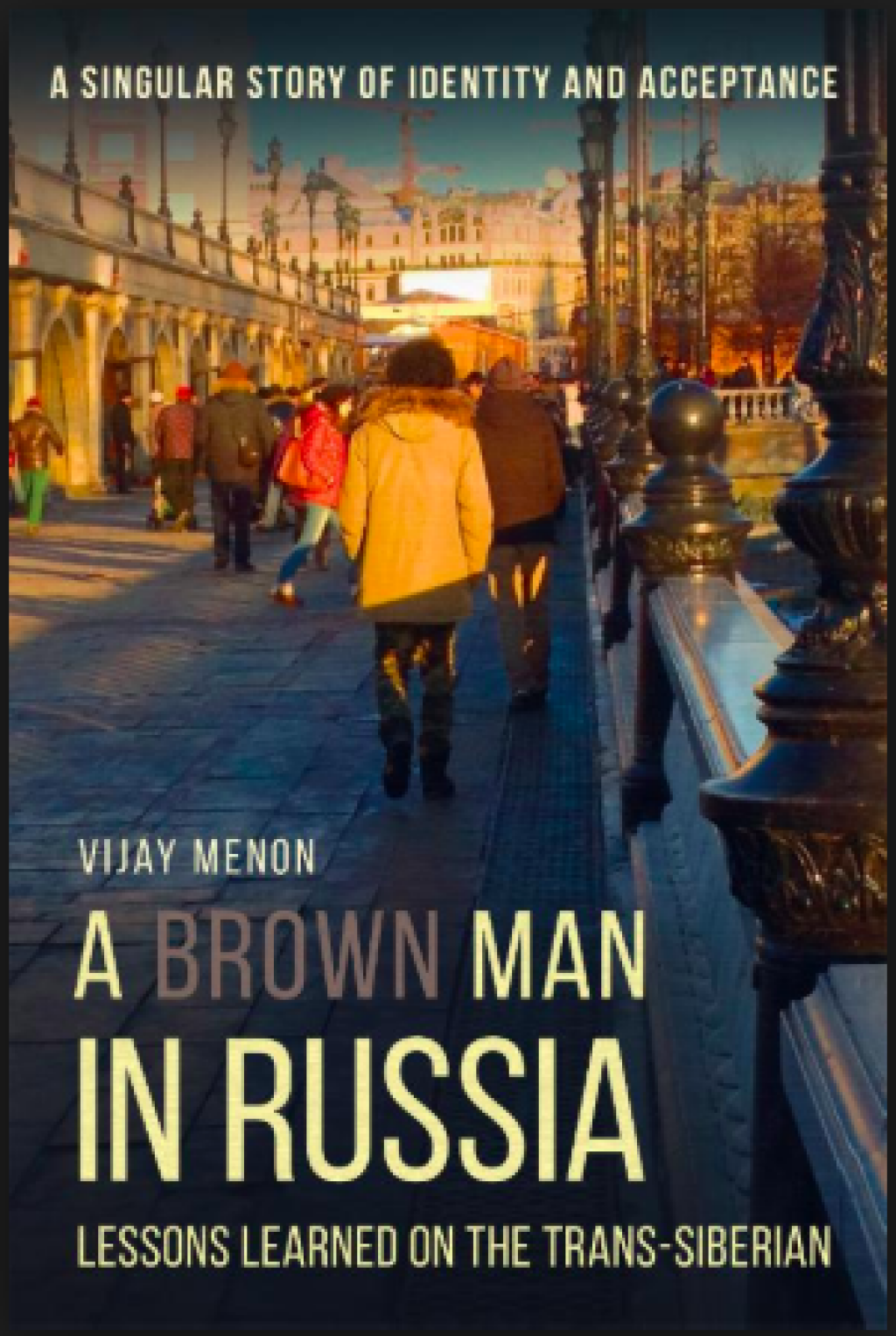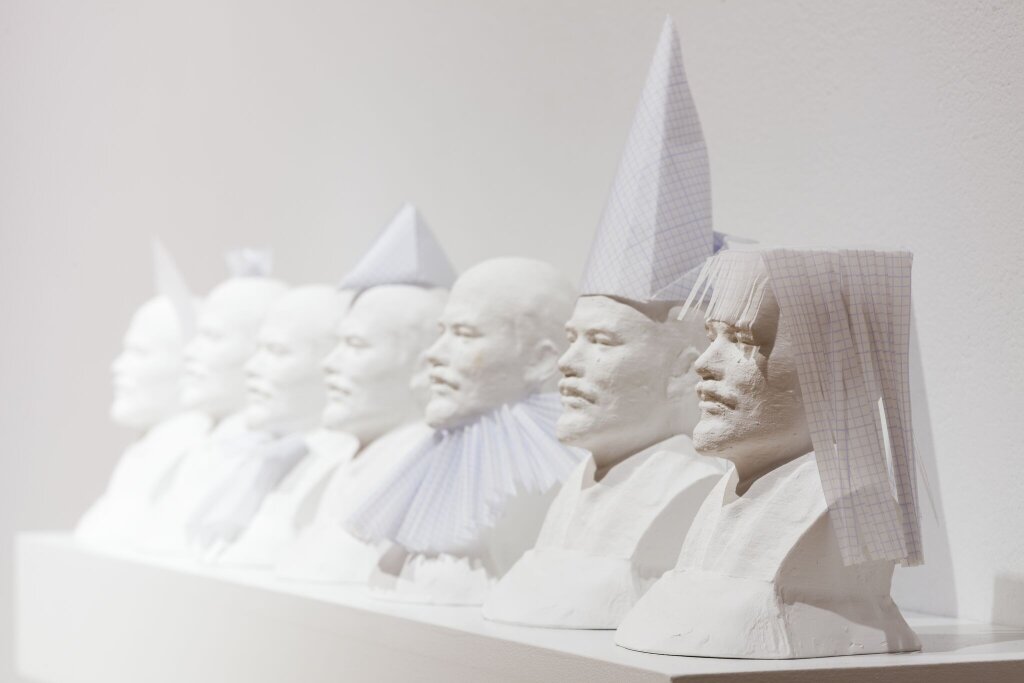Ani Kokobobo is an Assistant Professor of Slavic Languages and Literatures at the University of Kansas
In a special issue of the Tolstoy Studies Journal: Anna Karenina for the Twenty-First Century (edited by myself, Emma Lieber, and Michael Denner), we consider the Joe Wright 2012 adaptation of the novel, as well as other contemporary adaptations in an effort to address the broader question: how does Anna Karenina speak beyond its time, and how does it address contemporary problems? We relate the novel to contemporary questions of sexuality and desire, performativity and authenticity, and even “The Kardashians”! In conjunction with this project, we initiated a dialogue on social media among about Anna Karenina film adaptations. Responses from colleagues are attached below.
We expected colleagues to have particularly strong feelings about adaptations that visualized Tolstoy’s plotlines and characters. With the novel as a starting point, many scholars we polled evaluated the faithfulness of adaptations, but often went beyond “fidelity criticism” (Linda Hutcheon) to explore adaptations for their own artistic merit.
As you will notice, many scholars used the film’s deviations from the original as a point of departure for a host of questions about adaptations. Many more or less agreed that adaptations do not and cannot give us Anna Karenina. “If you want Anna Karenina, read it again (and again),” writes Carol Apollonio. More often, it was the irreverently imaginative filmmakers that produced the most compelling films. The adaptation in these accounts emerges, to use another of Hutcheon’s phrases, as it own “palimpsestic thing” that can simultaneously preserve, transform, and recast the original, all the while breathing new life into it. Adaptations of Anna Karenina can always reveal new details about the novel, helping unmask our own critical preconceptions about characters, or adding new layers to the story through the cinematic medium. Overall, although critics agree that this novel is particularly challenging to adapt, their remarks also suggest that this challenge may be precisely what makes the novel so alluring for filmmakers.
Adattatore, Traditore?
Emma Lieber
I haven’t seen many adaptations of Anna Karenina so I’m not able to comment on one in particular, but there is something about the question of adaptation generally that particularly comes out for me around Anna Karenina. Somehow reading about adaptations of Tolstoy’s novel always reminds me of that thought experiment that goes: what constitutes the essence of a person? If you cut off your arms, are you still you? (Yes.) If you cut off arms and legs, still you? (Yes). Torso? Chest, neck, ears? How far can you go with removals, divestments, mutilations, amputations, and still be you? What is essential, what is appendage? All adaptations revolve around cuts, but perhaps most profoundly with Anna Karenina, in which Levin’s plotline is often cut it its entirety or almost. In her film review for our issue, Robyn Jensen plays with the question of an adaptation’s “fidelity” to the original in the context of an adultery novel. There must be some irony to the notion that in reckoning with the crimes for which Anna dies, the filmmaker’s own straying so frequently consists of cutting Levin—as though we must match her final mutilation with his. Yet Tolstoy’s novel is constructed according to the insistence that no element can exist without any other—that essence is perfectly dispersed throughout the material in the same way that sanctity is immanent in the everyday. In this sense the notion that an adaptation could be any more faithful than a woman is something of a fallacy—given the question of cuts, divestments, and textual integrity, a resonant word.
A First Adaptation? Chekhov on Anna Karenina
Anne Lounsbery
Twenty-five years or so after the first publication of Anna Karenina, Chekhov published “The Lady with a Little Dog”—essentially a rewriting of Tolstoy’s multi-tome novel in the form of a 15-page story. But Chekhov’s main character is a garden-variety male adulterer (Gurov) who meets his Anna and is genuinely transformed by the experience of love. Tolstoy did not care for Chekhov’s beautiful story; he found it “almost animal” in its failure to focus on distinctions between right and wrong. And here Tolstoy is right: because “The Lady with a Little Dog” is simply not about an issue. It’s not about marriage or divorce or the Woman Question or the Russo-Turkish War or land redistribution or anything else. It’s certainly not about Society and its constraints; no one besides Chekhov’s desperate couple—including their spouses—seems to care that they’re committing adultery. The voice of the Law is virtually silent here, perhaps heard faintly only at the moment when Anna, immediately post-consummation, weepily invokes “sin” and laments that Gurov will no longer respect her—an echo that is not only fleeting but expressed in such clichéd terms as to sound vaguely ridiculous. (Indeed in such passages, Chekhov’s story—which is emphatically not a novel—hints at modernism’s declining interest in certain “external” social forms that nineteenth-century novels generally took quite seriously, at least in terms of the power such forms exerted over people’s lives.) If Gurov and Anna don’t try to get divorced in order to be together, it’s not because something called Society—or religion, or morality—is holding them back. It’s a genuine mystery, and an ordinary human mystery—not a blank spot that’s asking to be filled in with ideology.
While adultery doesn’t destroy Anna and Gurov’s lives, it doesn’t transform the world either (as it does in Chernyshevsky and in George Sand). Instead, adultery in Chekhov is the vehicle for revelations that are authentic but radically personal—so personal, in fact, that the story seems to tell us that our most real life must, of necessity, be a secret life. Here is the passage where this idea is set forth most explicitly:
[Gurov] had two lives: an apparent one, seen and known by all who needed it, filled with conventional truth and conventional deceit, which perfectly resembled the lives of his acquaintances and friends, and another that went on in secret. And by some strange coincidence, perhaps an accidental one, everything he found important, interesting, necessary, in which he was sincere and did not deceive himself, which constituted the core of his life, occurred in secret from others, while everything that made up his lie, his shell, in which he hid in order to conceal the truth … all this was in full view. And he judged others by himself, did not believe what he saw, and always supposed that every man led his own real and very interesting life under the cover of secrecy, as under the cover of night. Every personal existence was upheld by a secret, and it was perhaps partly for that reason that every cultivated man took such anxious care that his personal secret should be respected. (Pevear and Volokhonsky trans.)
As this passage suggests, in “Lady with a Little Dog,” adulterous love really does open the way to a more authentic inner self: in good modernist fashion, Chekhov links transgression with insight. But you might think it hardly matters, since nothing on the outside changes. There is just the cordoning off of an inner life that can only and always remain secret. Thus if we want to place “Lady with a Little Dog” in a literary tradition of writing about adultery, we might identify it as a post-adultery post-novel—or as a turning point toward another tradition, one in which dramas of infidelity are no longer social but instead strictly personal, played out entirely within the musings and torments of the unfaithful.
Anna in the USSR
Tim Williams
The brilliance of Aleksander Zarkhi’s adaptation of Anna Karenina, putting aside the excellence of the performances and cinematography or, viewed in a broader historical perspective, the poignant extratextual resonance, now, of actress Tatiana Samoilova’s later biography, is in the collaboration with composer Rodion Shchedrin, particularly in the ball scene. The ball in the film streamlines the action from the equivalent scene in the novel, but Shchedrin’s music (different in the film than in the trailer below) faithfully preserves the essential sense of discontinuity that is the leitmotif of the scene as read (Kitty and Vronsky starting their dance as the music stops, Kitty somehow “hearing” the subtext of Anna and Vronsky’s conversation): by being neither a realistic representation of the music actually played at the ball, nor an expressionistic portrayal of Kitty’s emotional state, but something in between, it mirrors Tolstoy’s free indirect discourse, his subliminal mimesis, admirably.
Alexander Burry
I don’t know if I have a “favorite” adaptation of Anna Karenina, but I think the 1967 Soviet film directed by Aleksandr Zarkhi, for all its flaws, has a lot to recommend it. Condensing Tolstoy’s 800-odd pages into a feature film seems to require one of two solutions. Nearly all directors simply reduce the novel to the Anna plot, ignoring or minimizing Levin. Zarkhi, by contrast, tries to incorporate Levin more fully into the film. But doing so results in what could best be termed a collection of scenes from Anna Karenina. The film moves quickly from one part of the novel to the next, including just the main lines of dialogue in each, and making quick, frequent, and jarring cuts. In the opening, for instance, Stiva’s conversation with Dolly about his infidelity is followed without any transition by his discussion with Levin about Kitty. The film also draws together various threads of the novel in the scene of Anna’s meeting with Levin. In their conversation, her comments on her desperate need for love intersect with Levin’s own suicidal thoughts, along with the narrator’s more general commentary on marital relations. Viewers may not find this juxtaposition effective, but it is a valiant attempt to make the film about Levin as well as Anna.
There are other things to like about the film as well. Perhaps even more than the casting, acting, and often very interesting camera work, the music of leading Soviet and post-Soviet composer Rodion Shchedrin stands out. Scores often take a backseat in analysis of films, especially when the focus is the transformation of a literary text, but they are important. The music in this film – both diegetic and non-diegetic – effectively creates connections between scenes, sometimes through the use of motifs. An eerie, atonal clarinet theme followed by a staccato motif in the trumpets, for example, is played as Anna passes Vronsky at the train station; the same theme appears again, this time starting in the strings, when she sees him at the Shcherbatskys’. This music, along with the parallel shots of Anna standing on stairs above Vronsky, link the two unanticipated meetings. In the ball scene that follows, the waltz starts out measured and cheerful, but quickly becomes terrifying with the music’s increasing tempo and dissonance. The director’s blurred shots of Anna and Vronsky dancing are from Kitty’s perspective, as she watches her suitor Vronsky becoming increasingly enamored of Anna. Non-musical sounds, incidentally, are also used to great effect: the banging of the hammer in Anna’s and Vronsky’s dreams of the peasant on the tracks, the scythes of Levin and his peasants, heard right after Anna tells Karenin of her affair, but before their cart has disappeared from the screen. Altogether, the sound track in particular provides a haunting and absorbing accompaniment, buttressing an uneven but intriguing example of Soviet adaptation.
From Garbo to Leigh, Anna in the Western Silver Screen Through the Ages
Donna Orwin
Four outstanding actresses – Greta Garbo (1935, Clarence Brown), 1948 Vivien Leigh (1948, Julian Divivier), Helen McCrory (1998, David Blair), and Keira Knightley (2012, Joe Enright/Tom Stoppard) – play Anna Karenina very differently. Each interpretation corresponds to a different point of view in the novel. To Vronsky when he first sees her, she is Garbo’s mysterious, crystallized goddess. Leigh’s Anna is the sophisticated Petersburg lady worshipped by a star-struck Kitty. To Vronsky later on, and in her own mind, Anna is his slave, drawn to his masculine power and sexuality (McCrory). Knightley’s Anna is a suffering victim. Furthermore, depending on the Anna in these filmic adaptations, supporting actors interpret other characters differently. Kevin McKidd’s Vronsky doesn’t fall under the spell of McCrory’s earthy Anna the way Frederic March (Garbo) does. Basil Rathbone’s Karenin (Garbo) is cool and slightly sinister, while Ralph Richardson’s (Leigh) is more sympathetic. I’m reminded of Tolstoy’s comment that when he was creating the novel, he first thought of Anna, and then the other characters came into being and grouped themselves around her in his mind. And at the same time, Anna gains in complexity in the novel by being refracted through their eyes.
Gary Saul Morson
My favorite adaptation of Anna Karenina is the old Greta Garbo film because it gets the story EXACTLY wrong. Karenin is made completely beastly, Anna just a long-suffering, completely innocent soul. In the novel, Vronsky goes off to fight the eastern war because Anna has committed suicide, but in the film, Anna commits suicide because Vronsky has left her to fight the Eastern War! The Levin story barely exists, only as much of it as Anna would pay attention to.
In short, the Garbo film is the film that Anna herself would have made. If one sees the difference between it and the novel Tolstoy wrote, one appreciates the difference in perspective underlying the work, and so one understands the novel a lot better. And one grasps the difference between the “pro-Anna” and “anti-Anna” critical traditions better as well.
Robin Miller
As my friends know, I am an inveterate movie-goer and have been one since about the age of eight. I try to see everything I can—and I enjoy watching movies as uncritically as possible. So, no surprise, I have seen most of the film versions of both Anna Karenina and War and Peace. I have watched them with contentment, in the dark, enjoying being at the movies as I always do. But as to taking them seriously and being willing to spend precious class time on them: no. I have tried it in the past; my students seem to like it, but I find myself deflected from the things I hope to discuss in class and end up feeling dissatisfied, almost guilty. My favorite adaptation of Anna Karenina is, ultimately, Woody Allen’s Hannah and her Sisters. I find it to be the most creative of the film adaptations of the novel, and I also enjoyed Allen’s interview about the influence of the novel on him. Stoppard’s recent screenplay had its great moments, especially the notion of having the race take place “indoors,” but no attempt to represent Anna in the actual flesh has ever done justice to the amazing physicality of Anna in the novel.
Joe Wright’s Anna Karenina and other Twenty-First Century Adaptations
Yuri Corrigan
We were asked to comment on our favorite adaptations, but I feel the need to get my strong feelings about Joe Wright’s Anna Karenina off my chest. One of Tolstoy’s brilliant observations about Anna is the way she poses as the traditional Romantic heroine – torn between Duty and Passions – as a way of easing her guilt and uncertainty over leaving her husband and son; that is, since the dictates of her chosen genre clearly state that Karenin must be unlovable and inhuman. I love the moment in the novel when Karenin surprises everyone by breaking out of this paradigm, by forgiving Anna; and suddenly all these characters who were nestled within a comfortable Romantic plot find themselves lost in the terrifying darkness of unstructured reality.
This kind of complexity is not only lost but actively suppressed in the film. It’s as if Wright and Stoppard were adapting Verdi and not Tolstoy. Jude Law hollers at Anna, “you are a depraved woman!” without any of the doubt and longing that make Karenin so interesting. Keira Knightley, for her part, plays Anna as an emotionally-charged robot programmed exclusively to pine for Vronsky. But these are great actors giving good performances, and Joe Wright's visual poetry is beautiful to behold. The blame has to be placed on the remarkably shallow script from Tom Stoppard that reduces every character to a type. There’s no indication here that Tolstoy had given any serious thought to the consequences of deconstructing conventional morality – that he was thinking beyond the specific repressions of Russian society to the more universal problem of human life as fiercely resistant to structure while needing it to survive. All the agony of Tolstoy’s unresolvable meditations on simplicity, obedience, rebellion, and authenticity are folded up and placed into two boxes: Duty (=bad) and Passion (=good). We come away with the supposedly profound insight that Russian society was moralistic and strict. In this context, Levin can only come across as some kind of deranged Hutterite. For these reasons I found it painful to watch, and I worry that the film will warn potential readers off Tolstoy by giving them the impression that he is a trivial writer. (It should be stated, however, that Matthew Macfadyen is so good as Oblonsky as to make the whole thing almost worthwhile.)
Caryl Emerson
Donna Orwin first. I agree completely that these four films—consciously or no—project different versions of Anna by representing the heroine (as only a camera can; this focalization is far more difficult to manage in live theater, of course) through the eyes and consciousness of a given self-consciousness. The actresses are indeed all excellent. Whether a given actress “is” this consciousness as a given, or only reflects it from another party, is not easy to determine and changes throughout the unfolding tragedy (Anna can afford to ignore negative or critical reflections from others at the beginning, but increasingly rarely, and by her final death-monologue she is wallowing in the negative entirely, excluding all shafts of possible light and distorting the driblets of light that manage to penetrate). Since access to various levels of consciousness is the strength of the Realist novel, its use as a filmic technique guarantees—in my opinion—that each adaptation, assuming mastery of the acting art, will be successful and partial at the same time.
Now Yuri Corrigan. My reaction here was more complex. I adored the Joe Wright film, a reaction that dismayed all the Russian literature fans in Princeton who polled me on it (everyone trashed it). I was at the time deeply into theatrical adaptations, Bakhtin and the performing arts, and teaching a seminar on the odd, at times violently irregular adaptations of Russian classics by Meyerhold, Tairov, Vakhtangov, and other Stalin-era directors … so what Wright had done struck me as both pretty tame, and very bold. Nothing like the awful new British War & Peace, where there wasn’t a breath of Tolstoy in Natasha or Pierre, just solid embarrassment of gesture, face, accent, and script. In Joe Wright, of course, layers were omitted, perhaps they were even repressed, but there was a concept, and that was (as I read it at the time): the tragedy of Anna bringing her life on stage. She didn’t only want to have Vronsky — plenty of married women just have lovers, and put up with the consequences; she wanted somehow to be almost applauded for it, to have everything (lover and son), to go to the opera just like before and not be noticed for anything but her beauty. She was playing a perverse game of the sort that only theatrical melodrama tolerates, and Wright brought her on the stage, literally, brutally, as the victim of society she decided she would be.
Of course a lot that matters in the novel must go. But some amazing things were retained against all verisimilitude, like the steeplechase (another theatrical show). The absence of the Levin-Kitty plot in most adaptations (since most care only about the infidelity plot, which only a genius like Tolstoy could make serve the search for authenticity, virtue, and God) was compensated for handsomely here with the inexplicable but richly symbolic natural grain fields at the end (everyone I knew laughed this out of court, but I was transfixed), where we see Karenin willing, in all his cuckholded and widowed shame, to pick up the pieces. A Magritte painting in its oddness and suggestiveness. So I was very moved by the film.
But then I read Corrigan’s comments and agree with them. Jude Law’s Karenin was, to adopt Donna Orwin’s framework, reduced to his inner, logically conscious injured self, shouting out at his wife’s unfair rejection of him; it did not take into account the unaccountable resurrection and rejuvenation of him at her birth-death bed, which I think we are to believe was genuine … and of course which made it all the more difficult for Anna, who did not want her husband back, rejuvenated or no, since she was in love with someone else. And she had decided that she didn’t care about his humiliation. It would have been easier if he had continued to curse her out. The Law-Karenin profile was brutal and singular. It was “on the outside only,” the way theater has to be.
Tolstoy’s rejection of all conventionality: of course we’re after that. But it is not, alas, what most readers of the novel will get out of the plot – although Corrigan is correct, the movie certainly does not make it easy to refine those questions, or even to pose them. I think the field of grain at the end is more successful as a symbol than any realistic “discussion of the issues” could ever be; for as Tolstoy said, if he could have done the novel more efficiently, with fewer linkages and internal dependencies permitting of generalization, he would have.
Can I defend the Stoppard script? Not really. But I admire an adaptation that does not believe it can compete verbally with Tolstoy. That doesn’t even try. Bondarchuk, in his epic War and Peace, used almost entirely chunks of unadulterated Tolstoyan conversation. This was great; Tolstoyan texture was nowhere violated, and since the audience of educated Russians was assumed to know the book by heart since second grade, there was no worry about “telling the story.” Even Prokofiev’s opera War and Peace is astonishingly faithful to chunks of Tolstoyan prose — and that was adaptation not into a screenplay but into a singable libretto. It doesn’t matter what you “leave out.” It’s the audience’s duty and pleasure to fill that in. This is the best way. So I had assumed that Stoppard, who cannot be accused of verbal carelessness, simply decided not to compete with Tolstoy’s multi-layered subtlety of plot options but only crammed into the filmscript the most brutal theatrical emotions. Of course assuming that every civilized person carried the whole of AK around in her head.
So I would have to watch it again, to see if all the things that offended Corrigan should have offended me, but did not the first time round!
Carol Apollonio
Like every great novel, Anna Karenina is an adaptation of life that then becomes life for others to adapt. Bondarchuk’s magnificant War and Peace sets an unsurpassable standard of fidelity. It is illustration, just like pictures in a book, showing us what we see when we read. For viewers who value illustration, the slightest slip in detail violates the text. When Joe Wright’s Anna Karenina came out, I asked a colleague—a multilingual, highly cultured native speaker of Russian—what he thought of it. He said that he couldn’t stand it: a man in that milieu would never have kissed a woman’s hand through a glove. I’m going—but wait, what about the rest of the movie? Like my colleague, many of our Russian friends were horrified that the film (like most Western film treatments of Russian literature) failed to illustrate the novel. At the other end, a book can be adapted too freely, with the original serving as the merest pretext for an artist or writer to vent some obsession. Irina Reyn’s novel, What Happened to Anna K isn’t about Tolstoy’s novel at all; it is about a love affair in a Russian Jewish community in Brooklyn. If you want Anna Karenina, read it again (and again). If you want something else, then read or watch that, but don’t assume it has a lot to do with Tolstoy. And if you want a dialogue of equals, search far and wide, and when you find it, sit back in awe and let the artists talk to each other. Take Chekhov and Joe Wright, for example, in conversation with Tolstoy.
Fortunately we don’t need to go into detail about the former; in “Chekhov and the Annas,” Caryl Emerson shows how Chekhov repeatedly “re-told” Tolstoy’s novel in his stories, not illustrating or imitating it, but debating important moral issues using the whole toolkit of art. And though I understand Yuri Corrigan’s point that Joe Wright's film simplifies many things, I take its simplicity as a function of the director’s crazy decision to stage the novel on a theater set. Who would dare to do that? Tolstoy creates an entire world, and we live in it. Joe Wright’s world doesn’t even pretend to be ours. Really, those dresses? The weird dance? Kitty flying through the air on a cloud? A horserace on a theater stage? A BLOND VRONSKY??? A WHITE FROU-FROU??? A SKINNY ANNA??? No wonder our Russian colleagues were outraged. But I was deeply moved. The film infected (zarazil) me in the most powerful Tolstoyan sense, right where it counts: in conveying the emotional tragedy of Anna’s story, and balancing it at every step of the way with Levin’s-Kitty’s-Dolly's alternative, yes, prosaic, plot.
On its surface, Wright’s film, in its off-the charts artificiality and defiant theatricality, seems to toss a full frontal challenge to Tolstoy’s ethos of sincerity and authenticity. Yes, Tolstoy is writhing in his grave. But both artists condemn this world. The superficiality and nastiness of the social milieu depicted in the film renders the moments of genuine human emotion by contrast raw, wrenching, beautiful, and real. As Donna Orwin points out, it takes some great acting to pull them off. For these scenes Wright silences and immobilizes the jabbering crowd, and all of us—a shocked, riveted, voyeuristic audience—watch the heroes as they give way to their true emotions and suffer the consequences. Pity and terror. My “crying” scenes are the gentle ones: loving, courageous Dolly joining the ruined Anna in the tea shop; the marriage proposal with the blocks; Kitty bathing the dying Nikolai using the ball-dancers’ arm gestures. The film’s lush visual sensuality shows both the seductive temptation of adulterous love and its the moral costs. The princess Sorokina looking up and glimpsing Vronsky’s whore of a mistress at the window. Anna’s shame at the theater, her desire at the ball, her despair at the end…And for raw power I have never seen anything to match the catastrophic moment at the horse race when Anna wails out in despair one name, and it is both her husband's and her lover’s.
Joe Wright read the book. Then he told the story—his way.
Ellen Chances
Many viewers, including some Tolstoy scholars, have praised the 2012 film Anna Karenina, with Keira Knightley and Jude Law. Many other viewers have not been satisfied. I intensely disliked the film, not because it strayed from the text, but because I found it to be a bad film as a film. Where was the psychological motivation, within the film, for treating Karenin as a hero? Where was the motivation, within the film, for the role of Levin?
In my view, the film was too self-consciously calling attention to itself, to its aesthetic devices. I have nothing against self-conscious aesthetic devices, if they contribute to the organic whole of the film. Where was the motivation, within the film, for using them? What did they add, emotionally, thematically, and structurally?
In short, a totally disappointing experience.
In contrast, watching the 2003 Pulitzer Prize winning play, Anna in the Tropics, by the Cuban-American playwright Nilo Cruz, was exciting. In this story of a “reader” reading Anna Karenina to cigar-rolling workers in a Florida factory, we learn that the workers’ lives reflect themes and characters in Tolstoy’s novel. Cruz’ depiction of two Karenin-like figures in the play led me to think about Tolstoy’s treatment of Karenin’s psychology.
Ani Kokobobo
This is probably not my favorite of all time (that would be the Bondarchuk War and Peace), but this year I watched (and wrote about for TSJ) an Australian film adaptation of Anna Karenina, titled The Beautiful Lie. It is a modern-day adaptation and it is so interesting to see how the show creators carry over the original conceit into our time. Anna and her husband (Xander in this version) are famous tennis players. So instead of being judged by high society ladies, Anna's adultery is tried in the court of public opinion (read: tabloids!). In other words, she ends up on page 6! She also has her own money, but her husband friezes her accounts during the divorce. Vronsky in this case is a Bohemian musician named Skeet. He's super dreamy, but at some point starts crushing on a fellow musician. Anna is devastated (you know what happens next!)
One of my favorite characters in the adaptation is Dolly, who after her husband's infidelity decides to basically change her life and become "fabulous" again. She doesn't make any big changes, just seems to change her attitude toward herself and the world. She decides to like herself a little more. And the producers play along in a way by showing the actress (Celia Pacquola) as more attractive by the end of the series than at the beginning. Her husband seems to fall back in love with her at some point too, and others are attracted to her. This is a very different fate than in the novel where washed up Dolly just can't get any love. Tolstoy can be so unforgiving with his ladies.

